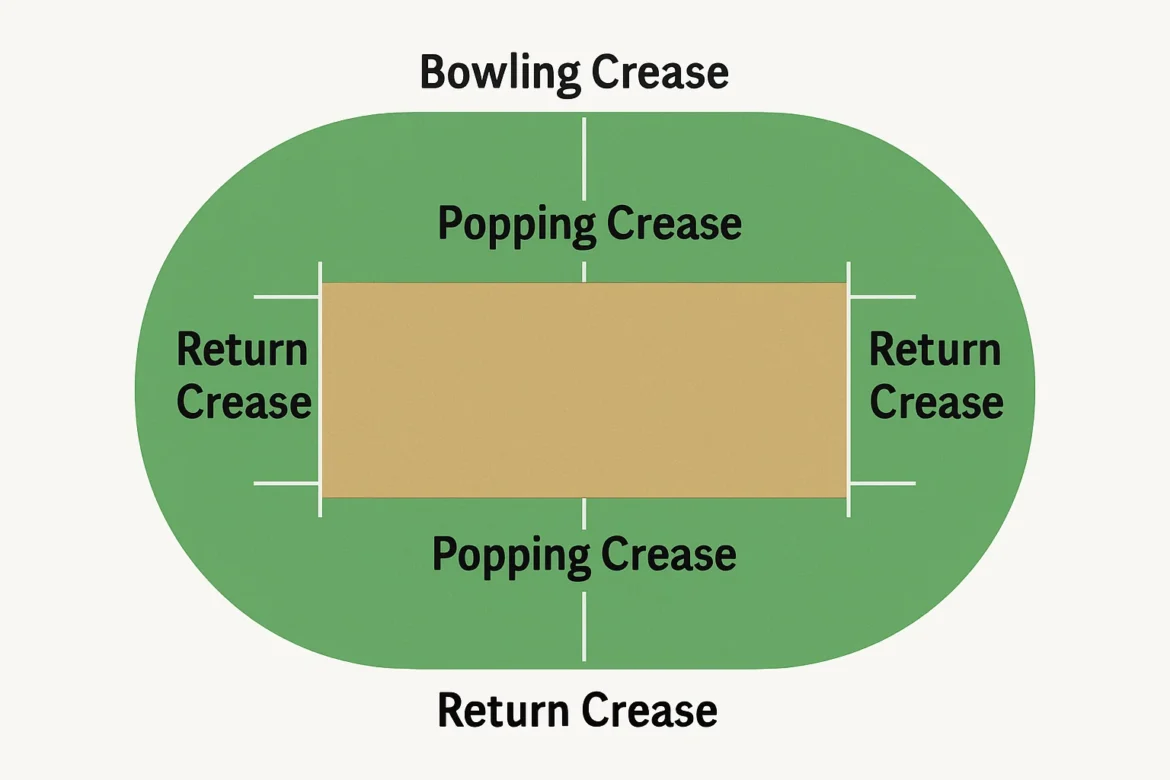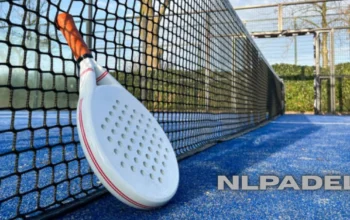
Cricket is one of the most popular sports in the world, played and followed passionately in countries like India, Australia, England, Pakistan, South Africa, New Zealand, and beyond. While the game has a rich history and countless rules, one of the most intriguing aspects for new fans and learners revolves around the cricket pitch and the various markings made on it. A common question asked by both beginners and even casual followers of the game is: how many creases are there in cricket? The answer might seem simple at first glance, but when examined closely, it opens the door to a deeper understanding of the sport’s structure, rules, and traditions.
Creases in cricket are not just random lines drawn on the pitch; they hold immense significance for batsmen, bowlers, and fielders, and they also dictate key aspects of the laws of the game. To fully appreciate the answer to this question, we need to explore the types of creases, their dimensions, their historical context, and their role in modern cricket.
Understanding the Basics of the Cricket Pitch
Before delving into the question of how many creases are there in cricket?, it is essential to first understand the cricket pitch. The pitch is the central strip of the field, measuring 22 yards in length (20.12 meters) and 10 feet in width (3.05 meters). It is here that the core action of the game takes place—where bowlers deliver the ball, batsmen attempt to score runs, and fielders try to dismiss opponents. The pitch is carefully prepared and maintained, and its condition can have a significant impact on the outcome of a match.
However, within this 22-yard area, the creases are what provide structure and rules to the contest between bat and ball. Without creases, there would be chaos; bowlers would not know where to bowl from, batsmen would not know their safe zones, and umpires would not have reference points to make crucial decisions. This makes the study of creases one of the most vital aspects of the game.
So, How Many Creases Are There in Cricket?
The direct and straightforward answer to the question how many creases are there in cricket? is that there are four creases at each end of the pitch, making a total of eight creases in the entire pitch. At each end of the pitch, you will find a popping crease, a bowling crease, and two return creases. Each of these creases has a different function and is governed by specific rules under the Laws of Cricket as maintained by the Marylebone Cricket Club (MCC), which is the custodian of cricket’s laws.
While the total count comes to eight when considering both ends, the interpretation often varies depending on how the question is framed. Some may say there are only four creases in cricket because they are thinking about one end of the pitch, while others expand it to include both ends. This is why clarifying the context is important when answering.
The Bowling Crease: Defining the Delivery Zone
Among the various creases, the bowling crease is one of the most important. The bowling crease is the line over which the stumps are placed at each end of the pitch. It is 8 feet 8 inches (2.64 meters) in length and is the fundamental line from which bowlers deliver the ball. When considering how many creases are there in cricket?, the bowling crease stands out because it directly dictates the legality of a delivery. The bowler’s front foot must land either behind the popping crease or on it, and not completely over it, for the delivery to be considered legal.
At the same time, their back foot must remain within the return creases and not outside them. The bowling crease also serves as a base reference point for placing the stumps, which makes it central to the game’s geometry. Without the bowling crease, there would be no clarity about where bowlers should deliver from, and this would create confusion and imbalance in the contest.
The Popping Crease: The Batsman’s Safe Zone
When people ask how many creases are there in cricket?, one of the most discussed creases is the popping crease. This is the line drawn 4 feet (1.22 meters) in front of the bowling crease, and it plays a vital role in determining whether a batsman is safe or run out. The popping crease is essentially the batsman’s lifeline—it defines the safe ground where a batter must place either their bat or a part of their body to avoid being run out or stumped. For bowlers, it serves as a restriction line, as their front foot must land behind this crease during delivery.
The popping crease is therefore central to both batting and bowling rules, making it one of the most crucial of all the creases. It is interesting to note that while the line is technically drawn at a fixed distance, the crease itself is considered unlimited in length on either side, extending beyond the drawn lines in principle.
The Return Crease: Containing the Bowler
 The third type of crease, the return crease, is often overlooked by casual followers of the game but is equally important in answering how many creases are there in cricket? At each end of the pitch, there are two return creases, drawn perpendicular to the bowling crease and extending behind it. These creases define the lateral limits within which a bowler must deliver the ball. Specifically, the bowler’s back foot must remain within the return creases at the point of delivery.
The third type of crease, the return crease, is often overlooked by casual followers of the game but is equally important in answering how many creases are there in cricket? At each end of the pitch, there are two return creases, drawn perpendicular to the bowling crease and extending behind it. These creases define the lateral limits within which a bowler must deliver the ball. Specifically, the bowler’s back foot must remain within the return creases at the point of delivery.
If the back foot touches or goes outside the return crease, the delivery is deemed a no-ball. This ensures that bowlers do not gain an unfair advantage by delivering from excessively wide positions. The return creases also play a role in ensuring that bowlers remain aligned with the pitch, maintaining fairness in the contest.
Total Number of Creases in Cricket: Breaking It Down
So, to revisit the central question—how many creases are there in cricket?—The breakdown is as follows. At each end of the pitch, you will find one bowling crease, one popping crease, and two return creases. This adds up to four creases at one end. Since a cricket pitch has two ends, the total comes to eight creases across the entire pitch. While some may argue for a simplified count of four, the correct answer from a technical standpoint is that there are eight creases. These creases collectively ensure fairness, clarity, and structure in the game, balancing the roles of batsmen, bowlers, and fielders.
Historical Evolution of Creases in Cricket
The history of creases in cricket is as fascinating as the game itself. When the sport was in its infancy in the 16th and 17th centuries, the creases were not as standardized as they are today. They were often marked crudely, sometimes with scratch lines or chalk, and the dimensions varied. It was only in the 18th century that cricket began adopting more formalized laws, and creases were given fixed measurements. The MCC, which was founded in 1787, played a crucial role in codifying the exact dimensions of the bowling, popping, and return creases.
Over time, these markings became universal, ensuring consistency in how the game was played across the world. Understanding how many creases are there in cricket? is thus not just about present-day rules but also about appreciating the long historical journey of the sport.
The Role of Creases in Umpiring Decisions
Another reason the question how many creases are there in cricket? matters is because creases form the basis of some of the most crucial umpiring decisions in the sport. Whether it is determining no-balls, stumpings, or run-outs, creases provide the visual reference points that umpires rely upon. For example, if a batsman fails to ground their bat behind the popping crease when the bails are dislodged, they are declared out. Similarly, if a bowler’s foot crosses the popping crease, it is considered a no-ball.
In recent years, with the introduction of technology such as Hawk-Eye, UltraEdge, and ball-tracking systems, creases have become even more important as precise reference points for replays and third-umpire decisions. Without creases, there would be no clear boundary between what is legal and illegal in cricket.
Creases and the Spirit of the Game
When exploring how many creases are there in cricket?, it is also worth noting how creases symbolize the spirit of cricket. The popping crease, for example, is at the center of the much-debated “Mankading” dismissal, where a bowler runs out a non-striker for leaving the crease too early. This mode of dismissal has sparked debates around the world about sportsmanship and the spirit of cricket. Creases thus carry not only technical importance but also ethical significance, as they test how players interpret and uphold the values of fairness and respect in the game.
Creases in Different Formats of Cricket
The question how many creases are there in cricket? applies universally across all formats of the game—Test cricket, One-Day Internationals, and T20s. While the pace and strategies may differ across formats, the basic structure of the pitch and the number of creases remain constant. Whether it is a five-day Test match at Lord’s, a thrilling ODI at the MCG, or a high-octane T20 at Eden Gardens, the same eight creases dictate the game. This consistency is one of cricket’s strengths, ensuring that the fundamentals remain unchanged even as the sport evolves in style and popularity.
Comparing Creases in Cricket with Other Sports
To further understand the importance of how many creases are there in cricket?, it helps to compare cricket with other sports. For instance, in baseball, there is a batter’s box and a pitcher’s mound that serve as positional references. In tennis, the service boxes and baselines dictate the play. Similarly, in cricket, the creases are the definitive markers that regulate positioning, legality, and fairness. Unlike many other sports, cricket’s creases serve dual purposes—protecting batsmen while also restricting bowlers. This dual role highlights their unique contribution to the sport’s balance.
Conclusion
The question is how many creases are there in cricket? may seem straightforward, but it opens the door to a deeper appreciation of the game’s structure and fairness. Technically, there are eight creases in total—four at each end of the pitch. These include one bowling crease, one popping crease, and two return creases per end. Each of these plays a unique role in regulating the game, from defining safe zones for batsmen to controlling the legality of deliveries for bowlers.
Beyond their technical functions, creases also symbolize the spirit of cricket, influencing debates on fairness, sportsmanship, and the evolving laws of the game. By understanding creases, fans and players alike gain insight into why cricket is not just a game of runs and wickets but also a sport built on precision, balance, and respect for rules.
Also Read: Soutaipasu


